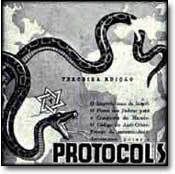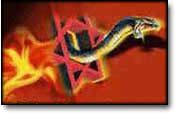Suzanna Kokkonen provides an historical background to the Jews of Italy and describes in detail the existence of Jewish Fascists and their relationship to Zionism.
The Jews first came to Rome in the second century BC. After the destruction of the Second Temple thousands of Hebrew slaves were brought to Rome with the Emperor, and for some centuries the whole of Italian Jewish history coincided with the history of the community in Rome. The Roman Jewish community is the oldest community in the west. During the Renaissance and up until the emancipation Italian Jewry flourished culturally and artistically, even when lacking equal rights.
The uniqueness of Italian Jewish history does not lie in its ancient roots. Rather, Italian Jewish communities gained a unique position compared to the rest of Europe in terms of emancipation. Many scholars, including Benedetto Croce, Antonio Gramsci and Cecil Roth, have testified to this emancipation. For example, in the Kingdom of Sardinia Jews became emancipated on 29th March 1848. That year, and in the year that followed, 180 Jews joined the Sardinian army. In 1859, 12,000 Jews fought with Garibaldi. Immediately after the emancipation Italian Jews started to work for their country. This trend developed further and Italian Jews became senators, generals, and so on. The war of 1915-18 proved beyond doubt that Italian Jewry deserved equal rights; many of them fought and died for Italy.
Mussolini himself, although later on considered somewhat illogical, proclaimed equality between Jews and Gentiles, and indeed, Italian Jews attained absolute equality with the Gentiles. Many Italian Jews, such as Enzo Sereni, were thoroughgoing products of the Italian "Cultura and Civilta" – culture and civilization. Because of this uniquely favorable gentile environment it is hardly surprising that the Jewish communities only became fearful when Mussolini started to explore a potential friendship with Germany. Until then, Fascism had hardly been perceived as a danger to the Jewish communities at all. In fact, a contemporary Jewish writer went as far as to declare that Mussolini promoted a good brand of Fascism.
Statistical information as a reflection of the society
Statistical information is relevant and necessary when dealing with the topic of Italian Jewry. Only against the background of the statistical information can we understand the emancipation of Italian Jewry. Equally, Fascism and Zionism operated in a certain environment that statistics can partly explain.
It is difficult to give exact statistics for the number of Jews living in Italy during the inter-war period. There were Italian Jews who lived permanently in Italy; there were also Jews living in colonies outside Italy, and Jews who came to Italy for different reasons. Not all of the Jews even practiced Judaism as religion. Therefore, we cannot offer exact numbers; however, the number of Italian Jews in 1911 was about 32,825 compared to 39,112 in 1931 and 47,252 in 1938. Here we can see a growth that is related to the events in Austria in 1938, and the threat that Hitler posed to many Jewish communities outside Italy. Many experts have explained the emancipation of the Italian Jews demographically. All in all, the number of Jews in Italy was very small.
There were large differences between the different Jewish communities. In a survey from 1938 it turned out that the Northern Italian communities were cosmopolitan, non-religious and highly assimilated. On the other hand, in Rome there were many religious Jews, many of whom chose to live in the confines of the old ghetto. The community in Rome had a very high birth rate compared to other communities, which can probably be explained by the dominant religious values. More
![[9_10_s22.jpg]](https://blogger.googleusercontent.com/img/b/R29vZ2xl/AVvXsEjTXnQay9wzz0E6nVHrVhaHKoq_zYXDqZjijHlNDQzj90MZzInrCuVX4ciFYCiBfZ7lhlgr2bBhhnl7ddWbhdih5JbXjQYbA605TNyiq046bQqjG2A4S-nHTmh1VBTQSG6tmc23wq47QQ/s1600/9_10_s22.jpg)




No comments:
Post a Comment